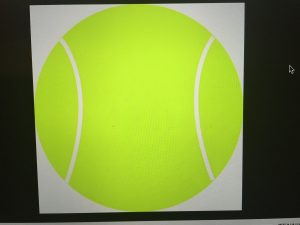Tennis Ball-Rubber Base-Felt-Endurance
The materials that go into making a tennis ball are at first glance rather straight forward. When doing some research on it, each web site I visited showed much the same process. The ITF also has strict regulations on what a tennis ball should and should not do in its performance testing.
In 1974-75 I was part of Penn’s tennis ball testing staff. This basically consisted of me receiving a delivery of tennis balls at different times from the factory that were not for resale. Each batch of balls came with a number of questionnaire forms. I was to give out a can of these balls to members chosen by myself. Many times I would test a can myself with a fellow pro. We would then play a certain number of sets with said balls. Following our play we were to fill out one of the questionnaires. I then returned these, with the used tennis balls to the testing facility for them to read the results.
At the time I was tennis director at the East Orange Tennis Club in East Orange, NJ, which consisted of 12 red clay courts. In 1975 I received a batch of tennis balls from Penn to test. These balls were special. They were to be used at the French Open that year. After putting the balls to the test, my eyes were further opened to the differences that could be built into the performance of tennis balls. I had given a can to some A players in the club, some of whom had played Davis Cup in years past and one who had been ranked #1 in the country as a junior, although now married with children. These players played nine sets with these balls and they still looked like new. It illustrated to me the difference tougher materials, built into the felt and make up of the ball, could make with the pros who hit with much more power and spin along with longer rallies on the red clay at Roland Garros.
It also opened my eyes in regards to the retail market the ball companies market to. Going into a Sports Authority, buying a Penn ball at a much cheaper price, also meant the ball not lasting or performing at the level of a tournament player tennis ball. The price point of tennis balls is pin-pointed with regard to the quality and longevity of its lasting performance. Market research also takes into account the public’s ‘patience’ point in targeting how long and how much a player will pay to play with one can. As a tennis director with a pro shop I remember times when a shipment of good quality tennis balls would wear out quicker than normal. It caused me to question if that also wasn’t built into the retail plan of a major tennis ball company to be implemented circumspectly.
How many of you put much thought into what kind of tennis ball you play with? Do you see the professionals now take three or four balls before each point and choose two before putting the ball in play? The playability of the wear and tear makes a difference in the choice of shot, or ‘tempo’ of the pace, when struck. How important is this quality of the tennis ball in your playing. Each ball – Wilson, Penn, Dunlop, Babolat, etc. tends to have slight differences in their playability. Do you have a favorite?


